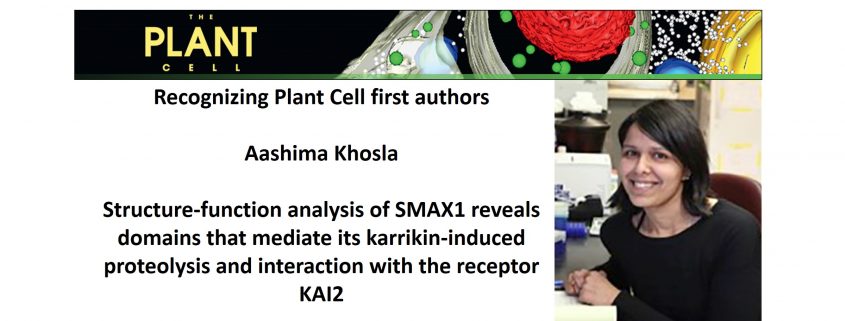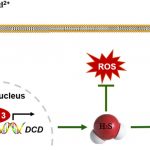Recognizing Plant Cell authors: Aashima Khosla
Aashima Khosla, first author of Structure-function analysis of SMAX1 reveals domains that mediate its karrikin-induced proteolysis and interaction with the receptor KAI2
Current Position: Postdoctoral Research Fellow, Department of Botany and Plant Sciences, University of California, Riverside, USA
Education: PhD in Biochemistry and Molecular Biophysics at the Kansas State University, USA; Master of Science in Biotechnology at the MS University of Baroda, India
Non-scientific Interests: traveling, baking, and yoga
Bio: I started my scientific career at Delhi University (India), where I got my Bachelor of Science in Biochemistry. During my studies, I developed a deep passion and curiosity for plants and went on to pursue a master’s degree in Plant Biotechnology from MS University (India). In 2010, I moved to the US to work with Dr. Kathrin Schrick at Kansas State University on the role of START domains in Class IV Homeodomain (HD)-Zip transcription factors of plants. As a graduate student, I used an interdisciplinary approach to show that START domains are versatile ligand-binding motifs that can modulate transcription factor activity by binding lipids. After completion of my Ph.D., I joined Dr. David Nelson’s laboratory as a Postdoctoral Fellow at UC Riverside. For my postdoctoral work, I use biochemical and genetic approaches to understand how plants sense and respond to karrikins (KAR), a class of chemicals found in smoke, and strigolactones (SL), a class of plant hormones. KAR and the SL signaling pathways are closely related, employing homologous receptor proteins (KAI2 and D14), which interact with the same F-box protein (MAX2), followed by the degradation of distinct homologous suppressor proteins (SMAX1/2 and SMXL6,7,8). As a number of steps in the KAR signaling model have been merely extrapolated from the SL pathway, my postdoc work closed that gap in knowledge by providing mechanistic insights into the post-translational regulation of SMAX1. This successful project resulted in the Plant Cell publication.




